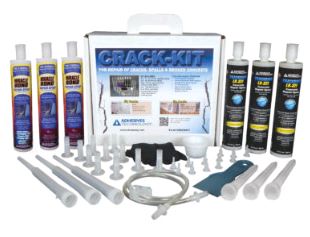Finding Grade
In a majority of Civil contracts Floor Flatness (FF) and Floor Levelness (FL) will be specified. Expectations by client/owner typically require contractors to sponsor a certified test which meet ASTM E1155 or ACI 302.1. For additional information regarding FF/FL please refer to ARCHBOX article titled FF and FL Numbers - Floor Flatness and Levelness
 |
| F-Meter |
 |
| D-Meter |
Contractors Red Flag: Equipment must have current calibration. Conduct test prior to early entry joint saw cutting; typically 4 to 6 hours after concrete placement.
Have you ever heard some say "Money is made on the Green"? Well, in concrete work it's all about the grade.

Large Flat Work (No Slope):Most experienced concrete contractors utilize a rotating laser with sensor mounted on grade rod. Grading is
typically conducted by two labors screeding concrete with light-
weight magnesium or aluminum bar. This technique would be acceptable if FF/FL is 50 or less. The crew operating walk behind and ride-on trowel machines can clean up most grade imperfections with float pans.

Higher FF/FL numbers require laser equipment similar to the picture shown above right called Samero. Laser guided machines will product tolerances of 1/16" per 10 feet, eliminating need for manual screeding shown above left.
Large Flat Work (Slope): Sites requiring drainage to trenches, catch basins or sumps use pre-established grading devices such as pipes or flat bars. Both are sufficient but flat bar screeding lowers concrete void as shown below. In most cases a shake of the bull float can fill flat bar void.
A #4 rebar driver is used to drive #4 rebar into subgrade. Note, if using vapor barrier tape or mastic will be required to seal penetration. In most cases 4' OC is sufficient.
 |
| #4 Rebar Driver |
Application: Flat bar can be used in conjunction with spin screed pipes or manual screed bars. Flat bars unlike pipes are flexible enough to be utilized in radius forming; i.e. tanks.
"This system kicks ass! Worked really well."
Christiaan Long Totem Construction LLC
Baton Rouge, LA






